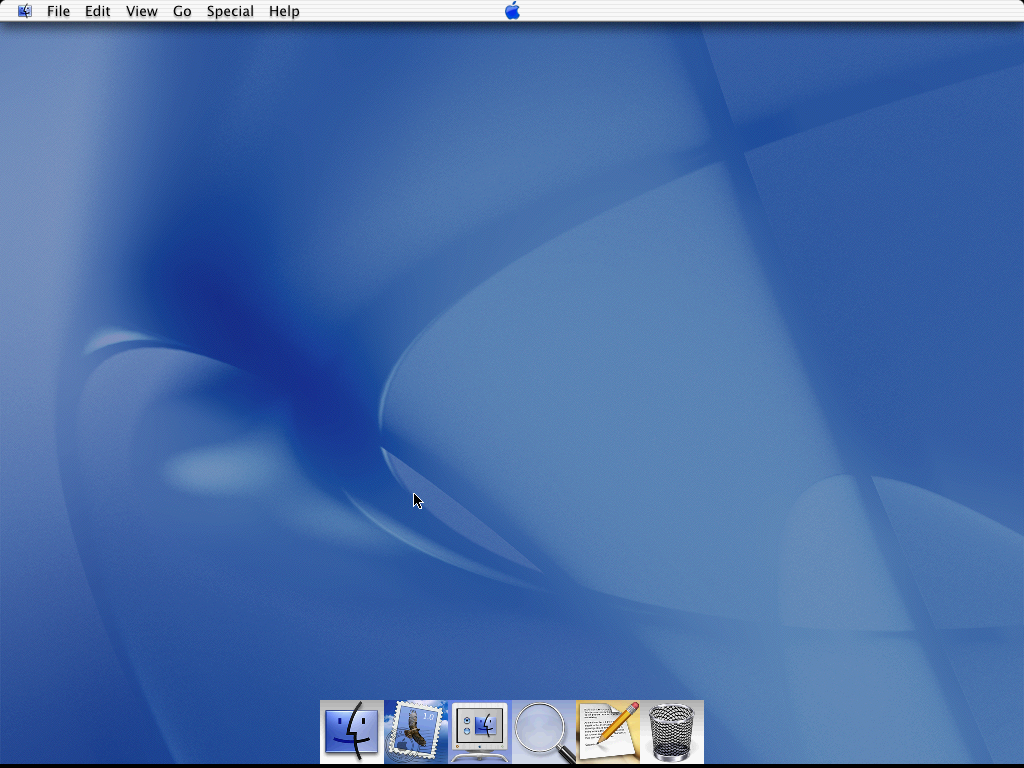Apple says you need either Snow Leopard (Mac OS X 10.6), Lion (OS X 10.7), or Mountain Lion (OS X 10.8) installed before you can install Mavericks (OS X 10.9). But there are situations in which. Presenting Apple Music on Mac. The new Apple Music app is the ultimate music streaming experience on Mac. 1 Explore a library of 60 million songs, discover new artists and tracks, find the perfect playlist, download and listen offline, or enjoy all the music you’ve collected over the years.
2008 – I just acquired an 867 MHz PowerBook G4. This is the slowest Mac officially supported by Mac OS X 10.5 Leopard. For anyone wondering whether running a such a high spec modern OS on an older Mac works well, I say go for it. You will be surprised. I was.
My PowerBook needed some work (broken screen and no keyboard), but I have restored it, and it works fine.
I am no stranger to old Macs and pushing them to their limits, but this is by no means stretching it on an 867 MHz G4. Leopard really runs very smooth, very fast, and is more than just useable.
You could never run Microsoft Windows on a computer that meets the stated minimum system requirements and expect it to be useable. Windows 2000 requires a 133 MHz Pentium, but it is extremely slow even on a 200 MHz machine. Windows XP requires a 300 MHz PC, according to Microsoft, but that is just laughable.
The Mac Experience
Macs have been renowned for their longevity, and while they are initially expensive, they tend to outlast their PC counterparts, counterbalancing the cost. Minimum system requirements for a Mac OS do not mean working at a snail’s pace. It seems Apple has thought its requirements through and thought of the user experience. While this might annoy users of Macs that don’t meet the system requirements, it seems to ensure that even a bare minimum supported machine will run well.
I have been using my 867 MHz PowerBook G4 running Leopard for the past few days, and nothing lags on it. The Finder is snappy, and CoverFlow is surprisingly sprightly. Running the usual bunch of apps – browsers, email clients, photo editing, and office suites – nothing seems to cause me any pain or to stress the Mac out.
Heavy apps are usually where a low-end Mac will fall down, but Firefox 3 performs amazingly well, even with a whole host of tabs open, and even sites like YouTube work fine. Microsoft Office 2004 and OpenOffice open very quickly, and navigating through opening, editing, and saving documents is a breeze.
Even Photoshop CS and Ableton Live do not cause the machine to choke. I was expecting to see the “spinning wheel of death”, but it has only popped up a few times for a few seconds.
Leopard Considerations
When considering Apple’s minimum system requirements for Leopard, there is more than just the processor speed. You might think that performance shouldn’t be that much different on an 867 MHz PowerBook to those from an 800 MHz PowerBook, but it is more than just processor power.
RAM has a lot of impact – the minimum requirement is 512 MB, and my 867 MHz PowerBook G4 has 768 MB – but there is even more to consider when it comes to Leopard. It is a very graphics-heavy operating system, requiring a video card that supports Core Image and Quartz Extreme. Older Macs – even slightly older Macs than the minimum required – have older graphics capabilities, and this has a major effect on the stability and usability of Leopard.
I’ve run OS X 10.5 on a 400 MHz PowerBook G4 and a “Sawtooth” Power Mac G4, and while it worked okay – it certainly was useable for light tasks – there were a lot of graphical glitches, and CoverFlow was incredibly slow and occasionally hung the Finder.
Go for It
To recap, if your Mac meets the minimum requirements for Leopard, go for it. If you have an 867 MHz PowerBook G4 or a 867 MHz Quicksilver” Power Mac G4, let alone a Mac slightly above that, go for it. You will be surprised. It is quick.
There will be people saying, “No, stick with OS X 10.4 Tiger.” I have run both on my PowerBook and on my eMac, and there isn’t a lot of performance difference. I am not one of those people who claims that Leopard is faster than Tiger, because it isn’t, but it certainly is on par with it.
Mac Os X 10.6.8 Upgrade To 10.7
Benchmark sites will say something different. If you run Xbench or Geekbench, they may give you a higher score running Tiger than Leopard on the same machine, but I don’t think most users will see a huge difference.
See Low End Mac’s Best Mac OS X Leopard Prices for current deals.
Appendix: Tiger vs. Leopard Performance


Dan Knight, publisher, Low End Mac
Bear in mind that Geekbench, Xbench, and other benchmarks weight things differently. Geekbench looks almost exclusively at the CPU and memory path, while most other benchmarks include graphics and hard drive performance. Because of this, different benchmarks will show different results.
Another class of benchmarks isn’t rooted in testing each part of the computer but instead in seeing how well it runs real world applications – these are the kind of things you’ll find on Macworld and Bare Feats. Benchmark results are impacted by the CPU (kind, speed, number of cores, cache size), memory (amount, bandwidth), hard drive (buffer, rotation speed, throughput), graphics (GPU, video RAM, system bus, screen resolution), and the specific versions of the OS and benchmark software being used. More system memory, a faster hard drive, and a better video card can all improve overall system performance.
Two operating systems can only be objectively compared on exactly the same hardware, and benchmarks tend to show better scores under Leopard on Intel Macs, better scores with Tiger on PowerPC Macs. Despite the numbers, most users report that Leopard feels faster, and Leopard has been updated several times since the first Tiger vs. Leopard benchmarks were posted, so performance is probably better now than it was a year ago.
In the end, it’s a matter of productivity: Will you be more productive with Leopard and its new features? Would moving to Leopard mean abandoning something that only works in earlier versions of the Mac OS (Classic Mode, for instance)?
- Leopard Performance (October 2007), Primate Labs, 2007.10.27. First reported Geekbench results compare Leopard and Tiger on two Macs.
- Leopard Faster than Tiger on Intel, Slower on PowerPC, and Possible Below 867 MHz, Dan Knight, Mac Musings, 2007.10.29. Looking at the first benchmarks comparing Mac OS X 10.4.x with 10.5.0.
Follow Simon Royal on Twitter or send him an Email.
Like what you have read? Send Simon a donation via Tip Jar.
keywords: #leopard #867mhz #g4 #experience #techspectrum #simonroyal
short link: http://goo.gl/sAqNao
Snow Leopard Mac Os Download
searchword: leopard867mhzg4

Mac OS X Snow Leopard is renowned for its simplicity, its reliability, and its ease of use. So when it came to designing Snow Leopard, Apple engineers had a single goal: to make a great thing even better. They searched for areas to refine, further simplify, and speed up — from little things like ejecting external drives to big things like installing the OS. In many cases, they elevated great to amazing. Here are just a few examples of how your Mac experience was fine-tuned.
Features
- 64 Bit
64-bit computing used to be the province of scientists and engineers, but now this generational shift in computing gives all users the tools to apply the power of 64-bit to speed up everything from everyday applications to the most demanding scientific computations. Although Mac OS X is already 64-bit capable in many ways, Snow Leopard takes the next big step by rewriting nearly all system applications in 64-bit code¹ and by enabling the Mac to address massive amounts of memory. Now Mac OS X is faster, more secure, and completely ready for the future. - Grand Central Dispatch
More cores, not faster clock speeds, drive performance increases in today’s processors. Grand Central Dispatch takes full advantage by making all of Mac OS X multicore aware and optimizing it for allocating tasks across multiple cores and processors. Grand Central Dispatch also makes it much easier for developers to create programs that squeeze every last drop of power from multicore systems. - Open CL
With graphics processors surpassing speeds of a trillion operations per second, they’re capable of considerably more than just drawing pictures. OpenCL in Snow Leopard is a technology that makes it possible for developers to tap the vast gigaflops of computing power currently in the graphics processor and use it for any application. - QuickTime X
Snow Leopard introduces QuickTime X, a major leap forward that advances modern media and Internet standards. QuickTime X includes a brand-new player application, offers optimized support for modern codecs, and delivers more efficient media playback, making it ideal for any application that needs to play media content. - Faster, more powerful Safari.
Safari renders web pages at high speed and delivers a range of new features, including full history search, smart address and search fields, an innovative way to display your top sites, industry-leading support for web standards, and more.
With Snow Leopard, Safari delivers up to 50 percent faster JavaScript performance thanks to its 64-bit support.6 In addition, Safari is even more resistant to crashes. It turns out that the number one cause of crashes in Mac OS X is browser plug-ins. So Apple engineers redesigned Safari to make plug-ins run separately. If a plug-in crashes on a web page, Safari will keep running. - Out of the Box Support for Microsoft Exchange
With Snow Leopard, the Mac is the only computer with built-in support for Microsoft Exchange Server 2007. So you can use your Mac — with all the features and applications you love — at home and at work and have all your messages, meetings, and contacts in one place.
General requirements
Leopard For The Macbook Air
- Mac computer with an Intel processor
- 1GB of memory
- 5GB of available disk space
- DVD drive for installation
- Some features require a compatible Internet service provider
- Some features require Apple’s MobileMe service